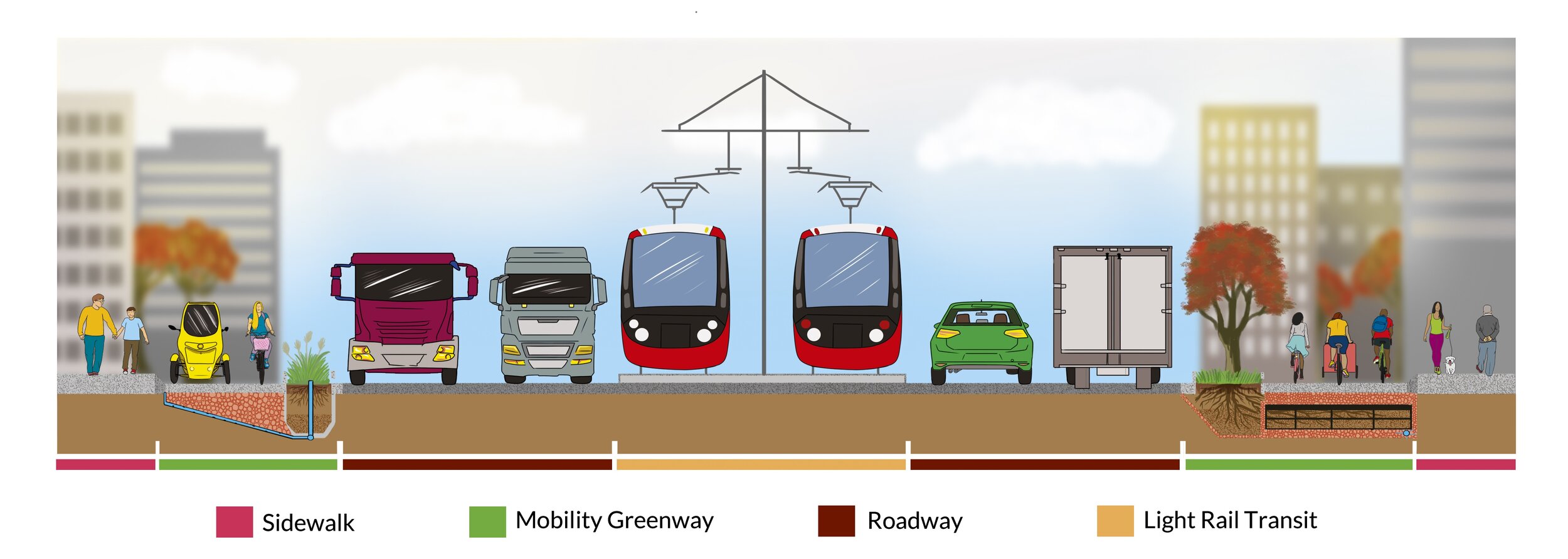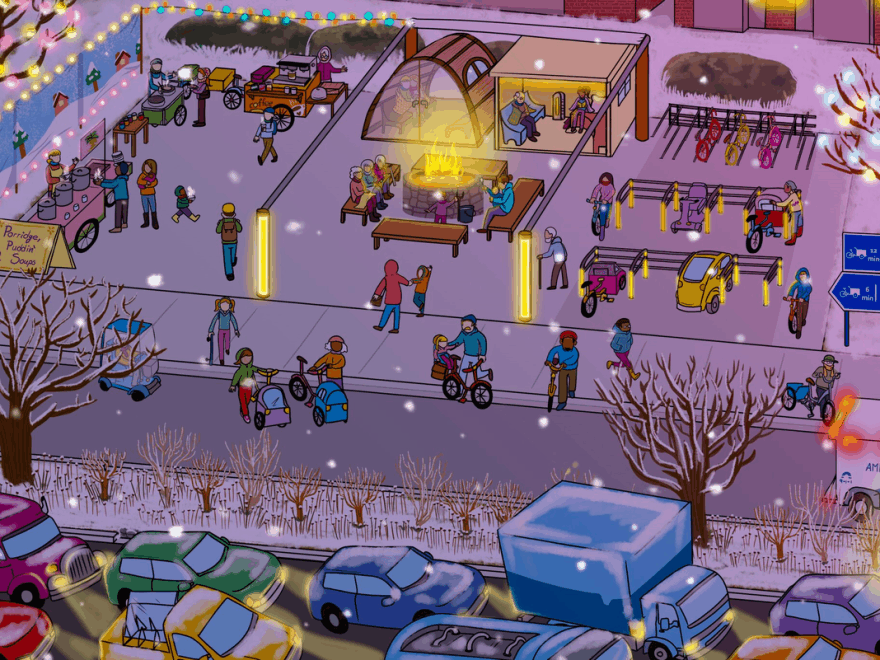Mobility Greenway
Unlocking a high volume suburban micro-mobility network
By: Our Greenway Conservancy
The Mobility Greenway model uses raingardens and trees extensively to protect a high volume suburban micro-mobility network, enabling economic opportunities and a healthy environment. Wide paths capable of moving people and goods will draw residents out to enjoy programmed parkette spaces allocated for entrepreneurs and leisure year-round. A living green infrastructure system prevents stormwater from overwhelming sewers, filters polluted air, and protects people from traffic violence. Creating an all-ages micro-mobility transport network enables seniors to live comfortably without car or mass transit access.
Car-dependent suburbs lead to negative health outcomes for seniors; conversely, our safe and accessible model supports daily physical activity and social interaction. Additionally, streets are often dangerous for people walking, including transit passengers who walk or cycle to and from mass transit. People walking will benefit from our approach explicitly separating people driving from those cycling with robust raingarden barriers.
The Greenway is equitable because it increases affordable independent travel options in less walkable areas with relatively poor mass transit access, including suburbs, Neighbourhood Improvement Areas, and industrial zones where racialized residents live and work. Further, legalizing cargo cycle food businesses in parkettes outside of commercial zones will support food security and enliven streetscapes within residential zones.
Our model unlocks the potential for sustainable and affordable multi-residential buildings - built with wide doors, large elevators, and enclosed mobility device parking / charging spaces - enabling micro-mobility solutions to meet most business and resident needs. Adopting the Mobility Greenway model will enable safe and practical journeys within resilient suburban communities.
Details:
Budget: The cost of individual parkettes will depend on the purpose and programming planned for each, but could start at C$5,000 for a simple concrete slab, bike parking and seating. Suburban main streets usually have sizable lot frontages with existing healthy trees that can be harnessed to create comfortable nooks. Funding for similar linear park projects usually tap into a mix of government infrastructure pools, and utilize adopt-a-trail fundraising approaches. Involving neighbourhood stakeholders in governance, fundraising and maintenance lowers costs, while increasing a sense of community pride and ownership in the entire project.
Materials and Fabrication: Permeable concrete or pavers are the ideal micromobility pathway material to ensure wheeled users are not rattled by riding over cracks on a daily basis. Soil, trees, plants, soil cells and sprinkler tubing will ensure the raingardens are healthy and remote watering can be conducted as required during dry spells. Concrete and metal will divide the raingardens from the road, and occasionally, linear park users. Materials used in parkettes will differ, but the focus will be on year-round use, user comfort and durability. Cement, steel, wood and refractory brick will be commonly used. Crucially, as actively maintained places, subtle seasonal modifications will be made to each parkette, such as the addition of holiday lighting and windbreaks in fall and winter, and protective canopies in spring and summer.
Installation and Other Services: Building a Mobility Greenway requires an integrated technical team committed to employing site-specific design, construction and maintenance approaches. As the Credit Valley Conservation noted in its Lessons Learned in Low Impact Development Construction case study, material and construction errors will impact a linear park’s long term performance, maintenance, and life cycle cost. Apart from building considerations, the active and ongoing involvement of the public as a key stakeholder is vital to all stages of project development and implementation. Without authentic community buy-in, communities will not invest their time, money and resources to ensure their raingardens remain a beloved community asset.
Contact
For more information, email the primary contact for this submission.





